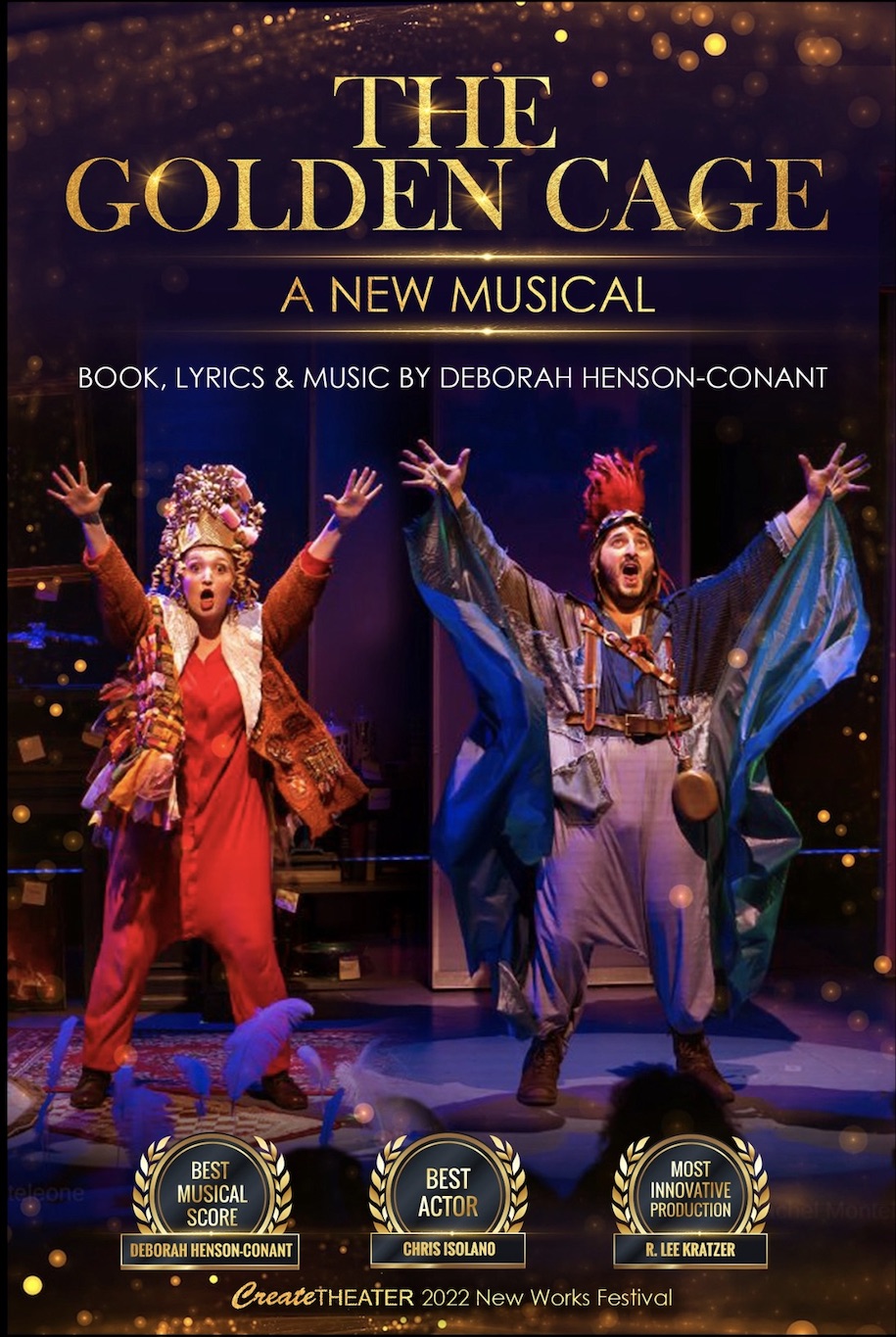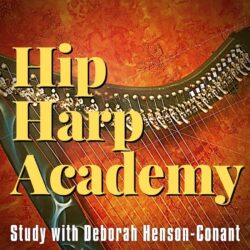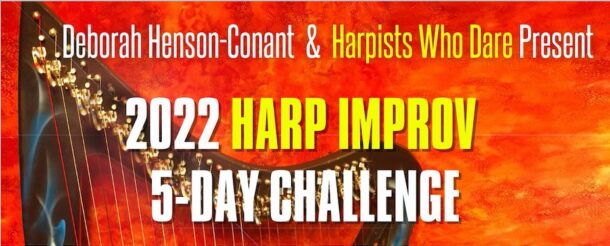For the last 3 months, Australian harpist Michelle Smith has been here at HipHarp Headquarters doing intensive studies with me. Michellle’s only been playing 3 years, but she’s serious about making a career playing harp, is already a great Burlesque harpist, can play up a storm on Hendrix’s “Red House” and was here to study jazz harmony, improvisation and arrangement.
Four or five times a week, Michelle and I would meet for lessons and questions and the rest of the time we’d all hear her practicing away in the student room, or marvel at the gourmet meals she cooked herself in the tiny efficiency kitchen in the office.
One of the advantages of her being right here was our ability to connect often or brief periods – sometimes as short as 2-or-3 minutes – tiny ‘micro-lessons’ several times a day, just so I could answer questions or refocus her work slightly. Since I was first a student myself, I’ve always imagined this as a useful way to study, since I noticed that sometimes I just needed a tiny bit of direction from my teacher, but many hours to practice that before getting the next tiny bit of direction. Having Michelle here, on premises, allowed us to work exactly that way.
In her 3 months here, we focused on four areas of study:
– Jazz Harmony: learning to read jazz ‘charts’ or ‘lead sheets’ (the standard form of musical shorthand used in jazz); to become more fluent translating that to harp; and getting a basic understanding of harmonic structure. Since she had very little training in music theory, this part of the training led to some intense discussions – my favorite, after a week with very little sleep, was when I blurted out in sudden sleep-deprived euphoria, “But wait! Don’t you see! The structure of music is time! Music IS the time-space continuum!!”
– Arrangement: learning both standard and non-standard ways to take a basic tune (melody and harmony) and turn it into a complete musical ‘story’ or ‘arrangement’ including an introduction, improvisation section, cadenza and coda (apologies to non-musicians for these technical terms!). In fact, we explored various forms, including classical forms like “Rondo,” and “Theme and Variation.” Our goal was to apply these principles to standard jazz tunes, but first we separated the basic concepts so it was easier to see how to use them — and my favorite week for this section was Michelle’s utter committment to arranging “Twinkle Twinkle Little Star” in a variety of styles, from the sublime to the ridiculous — and using that simple tune to develop her arrangement chops.
– Inflection: This is an area of work that I had no name for before Michelle arrived, but when she showed up with her own transcription of Jimi Hendrix’s “Red House” we had to find a way to bring it alive. Our challenge was that, at first, it just sounded like a harp transcription of the notes to a Jimi Hendrix tune. What we wanted was a way for Michelle to musically channel the spirit of the song to an instrument that typically doesn’t play this style. The solution was Michelle’s detailed focus on each note, finding the right ‘inflection’ by bending notes, adding unexpected harmonies, avoiding typical harpistic gestures and discovering that making this piece sing required many hours of “living it” even after she had the notes firmly in her grasp. You can see a late-night session she videotaped in my studio, where she plays the piece.
– Performance: Because Michelle’s a natural on stage, and has experience performing Burlesque harp at home in Perth, we kept our focus on more structural and technical practice. But two weeks before she flew back to Australia, Michelle joined me on stage for two concerts.at Tupelo Musical Hall in New Hampshire, and TCAN in Natick, MA. I tried to create a sense of our stunning choreography in the series of images from my Flipcam above.







What an incredible experience she had. Certainly one of my goals in life. I’m putting it out there…to one day attend at the very least the best workshops around…yours. Now…Oz(my harp) and I are walking the halls of the hospital and playing for patients in transition. A harp’s vibrations are beyond perfection. Oh yes…thank you for signing your CD that has one of my favorites Dance…that’s me. My harp teacher Marilyn Lemke came and was so kind to gift me with it. Well I’m sorry I’m just going on…I have such gratitude for you being in my life. You are such an inspiration and when I hear my body slow down I hear you sing and play Dance…thank you. Always your fan. Brenda Anglin, R.N.
Brenda, thank you for your beautiful response to my post! Are you talking about the song “Dance the Way You Dance”?